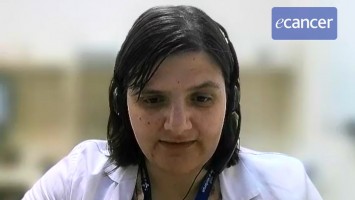NCRI Cancer Conference 2010, 7 November 2010, Liverpool
Professor Robert Weinberg – Whitehead Institute for Biomedical Research, Massachusetts, USA
Cellular mechanisms of cancer cell dissemination and metastases formation
I will be talking about the mechanisms by which cancer cells disseminate from a primary tumour and ultimately end up growing and forming metastases at distant sites in the body. This was a mysterious process as recently as ten or fifteen years ago, but over the last decade through the work in a number of laboratories, my own being only one of them, we’ve begun to understand the cellular mechanisms by which cancer cells, specifically carcinoma cells, succeed in invading adjacent tissues, moving through the blood stream and ultimately landing in the capillary beds of distant tissues. This would, on its own, seem to be a highly complex set of steps but in fact it seems now that by reactivating a normally latent embryonic program called the epithelial mesenchymal transition, or EMT, cancer cells are able to gain access to a whole variety of traits that in concert enable them to disseminate. In fact it raises the question of whether cells in a primary carcinoma are already equipped to disseminate on their own; more specifically we know that a whole series of mutations must affect the genome of cells within a primary tumour in order to enable to the cancer cells to proliferative robustly in that tumour.
The question is, then, if those cancer cells are to leave the primary tumour and migrate to distant sites do they require additional mutations above and beyond those that were needed to form the primary tumour? And it seems now increasingly to be the case that the mutations that were required to make the primary tumour sufficed indeed to enable these cells to metastasise, and what the primary carcinoma cells require is, in addition to these mutations, a series of contextual signals that the carcinoma cells receive from the nearby activated stroma, that is the mesenchymal cells that have been recruited into the tumour mass by the carcinoma cells. Once they are present in the primary tumour site these mesenchymal cells are able to signal reciprocally back to the carcinoma cells, often releasing inflammatory signals that in turn seem to activate the latent EMT program in the carcinoma cells, thereby conferring on carcinoma cells traits such as motility, invasiveness and an enhanced resistance to apoptosis.
Of some interest is the fact that several years ago we discovered that the product of forcing an epithelial cell, either normal or neoplastic, through an EMT is not a bona fide mesenchymal cell as the term EMT would suggest. Instead it seems increasingly to be the case that the product of an EMT is actually an epithelial stem cell, that is a cell that has self-renewal capability, such self-renewal capability being measured by implanting carcinoma cells in, for example, a mouse and observing whether such cells have tumour initiating capability, that is the ability to seed a new tumour. And when one converts epithelial cancer cells, carcinoma cells, into the more mozaicable state by passing through the EMT, now these carcinoma cells acquire tumour initiating ability, that is they become cancer stem cells. This turns out in turn to be important for the process of metastasis because if a self-renewing cancer stem cell leaves the primary tumour it’s qualified, in principle, to seed a metastasis at a distant site because it has tumour initiating capability by definition. Conversely, the majority of cells within a primary carcinoma, because they lack this self-renewing stem cell-like activity, even if they were able to disseminate would in principle not be qualified to seed a metastasis by virtue of the fact that they lack this tumour initiating, self-renewal capability.
How will this information help combat this process?
To state the obvious, if we don’t know how metastasis occurs then our hands are really tied in terms of developing novel therapeutics. We now begin to understand how this dissemination occurs and it’s conceivable to me that over the next decade we will develop a variety of drugs and cytokines that induce cancer stem cells to differentiate into non stem cells, thereby giving up the self-renewal capability that is essential to their ability to seed new tumours. But that’s a speculative notion at present.
Can you tell us about the session you will be chairing at NCRI 2010?
The overall theme of that session is the notion of a tumour stroma. Years ago one thought of a carcinoma, for example, as simply being a mass of cancer cells but increasingly now one comes to recognise that a carcinoma is a complex tissue, indeed as complex as a normal epithelial tissue, in terms of its constituency of distinct cell types. And therefore a carcinoma can recruit a whole series of mesenchymal cells including fibroblasts, myofibroblasts, endothelial cells, pericytes and a whole series of inflammatory cells, myeloid cells and macrophages, and neutrophils and even T lymphocytes. And together these cells that constitute the tumour associated stroma have a profound effect on the one hand in recruiting the ingrowth of blood vessels that are needed in order to nourish the tumour, and on the other hand in releasing signals that, as I mentioned before, are capable of altering the behaviour of the carcinoma cells.








